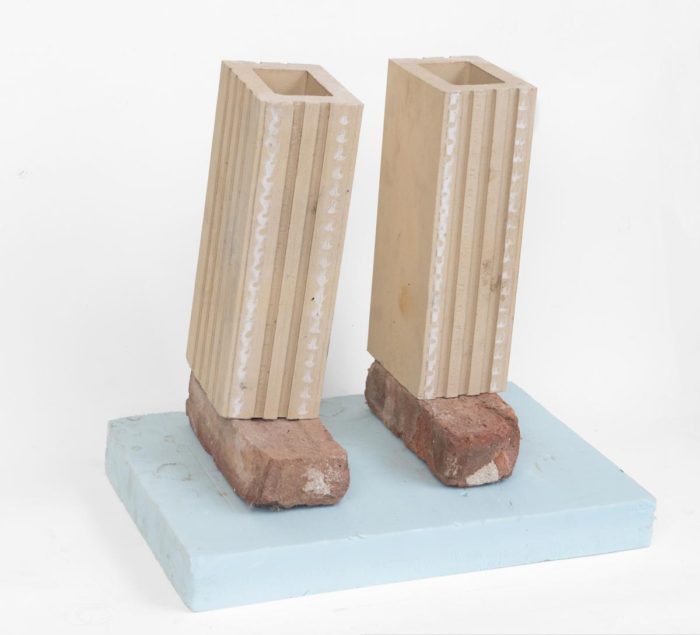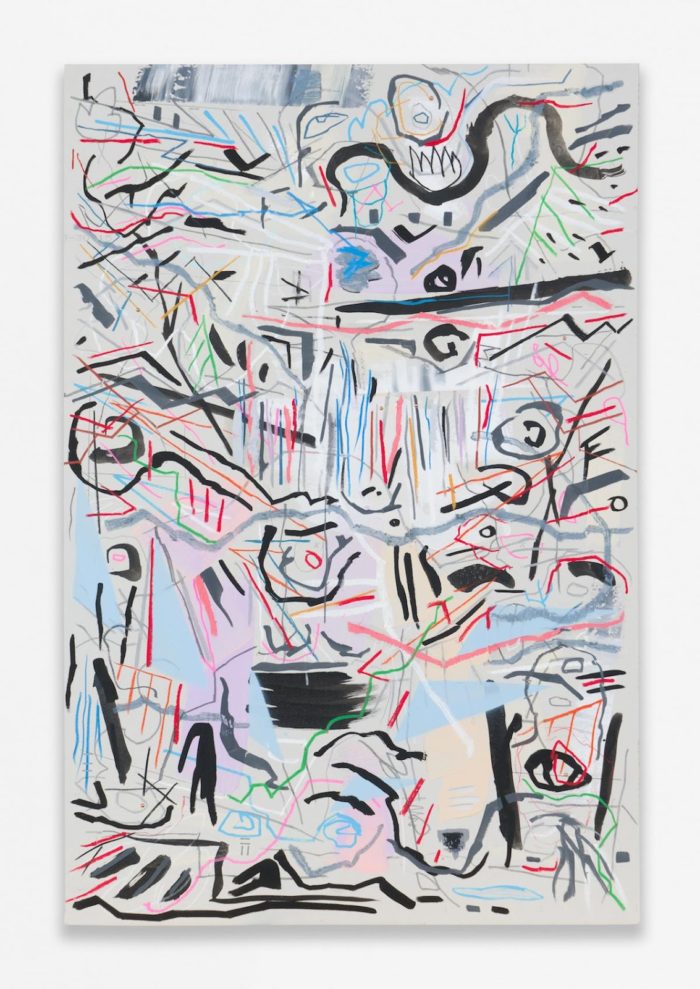
1978 was a monumental year. The American Indian Religious Freedom Act (AIRFA) was passed, establishing protection of the religious rights and cultural practices of American Indians, Eskimos, Aleuts, and Native Hawaiians. These rights include access to sacred sites, repatriation of consecrated objects held in museums, and the freedom to worship through ceremonial and traditional rites. The Act obliged all governmental agencies to eliminate the obstruction of Native religious practices and also acknowledged the prior violation of that right.
Coincidentally, the establishment of this freedom of worship mirrors artist Matthew Kirk’s own lifespan. Born in 1978 and of Navajo descent, the date serves as a keen metaphor for his own time-based, spiritual approach to painting. Rituals—personal and communal alike—open the practitioner’s mind to otherworldly concerns. One can only imagine the trance Kirk must be in to expertly balance each adroit color stroke and line. Kirk’s meditative, all-over aesthetic moves rhythmically throughout the exhibition across three large paintings, producing an energized awareness that engulfs its viewers.

Kirk’s motifs rest upon raw matte backgrounds. He uses sheetrock and plywood as painting supports, which effectively echo his practice of using readily accessible supplies, primarily from the construction industry. For example, the untouched purple color that serves as the ground in the remarkable work Fence Hopper—the largest painting on view—is ubiquitous to the material. In addition to his idiosyncratic hand, the materials Kirk uses are both relational and uniquely individual. A signifier lies in the commercial grading of the sheetrock, in this case, purple equals moisture resistant.
A singular sculpture, lilliputian in comparison to most of his work, Papa’s Boots, rests in the center of the space. Built of stacked bricks, and arranged to resemble a pair of work boots, they similarly articulate a subtle working class cipher.

The results of Kirk’s work constitutes a distinct visual language of the artist’s own making, yet the codes are easily cracked only by a particular culture and class. Drawing upon her Muscogee Creek Nation heritage, poet Joy Harjo remarks, “The literature of the aboriginal people of North America defines America. It is not exotic. The concerns are particular, yet often universal.” As in literature, Kirk’s marks and motifs are simultaneously omnipresent and deeply personal.
Cumulatively, Kirk’s compositional strategy unfolds and unites in an abstracted Southwestern landscape, lush with freeform symbols. A pair of boots, a basketball hoop, a Navajo man with a ponytail, all slowly reveal themselves to the patient viewer. His palatial configurations exude an intense cadence based on the matrix of mark-marking that the artist has developed over the past decade. He liberally combines streaks of oil pastel, abundant dashes of chalk, strokes of gouache, dabs of spray paint, graphite, and acrylic paint. The artist sources vintage brass BB and shoots them into the surface.

Looking at the various marks together, one senses the deep spring of vitality and consciousness that dances across the surface — spontaneous instances captured via form and color. Looking at the body of work as a whole, the myriad of layers embedded within this smart collection folds codes of visual pleasure into impressive political circumstances, without being impervious to either.
Matthew Kirk’s 1978 is on view at FIERMAN until April 29th. The gallery is located at 127 Henry Street in the Chinatown neighborhood of Manhattan. In addition to the gallery show, Kirk will launch a series of limited edition leather chairs made in conjunction with Erickson Aesthetics. The chairs will be on view two blocks from FIERMAN at CONSTANCE, 219 Madison Street.
Matthew Kirk (b. 1978, Ganado, AZ) lives and works in Queens, NY. A self-taught artist, he has recently had exhibitions at Adams and Ollman, Portland; Intuit: The Center for Intuitive and Outsider Art, Chicago; Louis B. James, New York; and Exit Art, New York. His work has been published in The New York Observer, Modern Painters, and The Wall Street Journal, among other publications.
Matthew Kirk Bestows the Year 1978 Today at FIERMAN Gallery
127 Henry St, NY 10003
New York, USA
